Canadian public institution the Art Gallery of Hamilton, located in Ontario, is host to what is possibly the most important Canadian art show to focus on comics ever. Co-curated by the gallery’s adjunct curator of contemporary art Alana Traficante and award-winning graphic novelist Joe Ollmann, the show This Is Serious gathers together 650 pages of comics art by 47 artists. The curators’ goal is offer a selection of current Canadian indie comics but also some historical works in order to give a broad view of the spectrum of comics produced in Canada, with a eye towards diversity and assorted geographical locations.
This Is Serious runs through Sunday, January 5, 2020, and features work by Sami Alwani, Ho Che Anderson, Kate Beaton, Marc Bell, Blaine, Simon Bossé , David Boswell, Chester Brown, Nina Bunjevac, Jessica Campbell, Geneviève Castrée, Marta Chudolinska, David Collier, Katherine Collins, Michael DeForge, Julie Delporte, Aminder Dhaliwal, Julie Doucet, Pascal Girard, Gord Hill, Jesse Jacobs, Patrick Kyle, Ginette Lapalme, Ness Lee, Hartley Lin, Graeme MacKay, Billy Mavreas, Carel Moiseiwitsch , Sylvia Nickerson, Obom, Simon Orpana, Meredith Park, Cole Pauls, Michel Rabagliati, Rebecca Rosen, Gord Pullar, Seth, Walter Scott, James Simpkins, Fiona Smyth , Jillian Tamaki, Maurice Vellekoop, Kat Verhoeven, Eric Kostiuk Williams, Connor Willumsen, Jenn Woodall, and Doug Wright.
I spoke with curator Alana Traficante about the show.
John Seven: How did This Is Serious come about?
Alana Traficante: Joe Ollman and I, at an art opening, had a conversation about how someone really needed to do a comics show at an art gallery in the area. It was a pretty fleeting conversation, but it did stick with me. And then the Art Gallery of Hamilton received a donation of work by Marc Bell into its permanent collection. At the time when we were assessing the donation, we talked about how there was a number of artists working and cartooning in Hamilton and that that was an interesting sort of burgeoning practice in the city.
I’m with the curatorial team at the gallery, so they asked me to just start doing some research into that. From that research we identified that quite obviously it’s not just a local practice, so there was an opportunity to do a real national survey about Canadian indie comics because it hadn’t been done before so we decided that the project should be national in scope. Knowing that we had had these early conversations with Joe, a couple of conversations over a little bit of time, when we realized that we wanted to do such a large scale exhibition, we invited him to come on as a co-curator.
Seven: What was your experience with comics prior to This Is Serious?
Traficante: My experience in comics was pretty limited. I had dabbled lightly in reading some graphic novels through university. But I had done some research around Canadian indie comics, specifically in Toronto around 2014-15 when the Art Gallery of Ontario had that big art Spiegelman exhibition. I was at the time and MFA student in the curatorial practice program at OCAD University and as one of our like practical projects we programmed a First Thursday event, which they don’t do anymore. They used to be these once a month art parties where they would have local artists, installations and music and performers. My MFA cohort curated the First Thursday that corresponded with the Art Spiegelman exhibition and so through that assignment I had come to know the work of Fiona Smith, Ness Lee and a number of other folks that we engaged in that project and that had sparked my interest in the field. But I was really coming at it as a contemporary curator first as opposed to someone that’s deeply entrenched in the comics world. So through this I felt a little bit like the outsider in the project, but it’s also given me this really wonderful different perspective.
Seven: So you were discovering creators and work as you did your research.
Traficante: Absolutely. And in this case it was really like learning about a genre through the artists first because we did so many studio visits. Obviously Joe and I started in his library looking at books and making lists and then from there determined who we wanted to visit. Coming to know the work through the artists first was quite a privilege I have to say and a really very wonderful way to kind of learn about an overarching genre. So I think I had a very special perspective coming to the research that way.
Seven: As you moved along through your process did you ever get a sense of a united identity for Canadian comics?
Traficante: I think it’s hard to say that Canadian comics are a certain thing because it’s obviously a very, very vast and very variable genre. However, I think what we came to realize is that Joe and I share a common interest in artists that are working from like a place of personal storytelling. And so I think that informed the shape of the exhibition. I mean, obviously it’s a huge exhibition, but it’s still just a select view of Canadian indie comics. So we took that perspective. We were really interested in and focusing on personal narratives, but that takes a number of different forms. We also made an effort to try and have a pretty broad geographic scope.
There’s certainly pockets of activity in Toronto and Montreal. And we also focused on Hamilton because of our local connection. But we made a concerted effort to bring in west coast artists and then we were also really interested and looking at taking a more culturally pluralistic approach. So we did, focus our research on women, POC artists, indigenous artists, so that we could present the broadest survey within that framework of personal storytelling. So it’s difficult to say there’s a particular thesis to the exhibition or there’s a particular argument about indie comics outside of that because we really set out to do a broad survey as best we could.
Seven: One thing in common between many of the creators you’re showing work by is that, as you just said, they tell personal stories. Because of that, much of their work depicts life in Canada specifically and informs readers about Canadian culture. Michel Rabagliati is one cartoonist that leaps out at me in that regard.
Traficante: Maybe to a degree for sure. I think it’s part of a sense of identity that is often thoroughly steeped in a sense of place. So I wouldn’t doubt that those two things come together in the artists’ works. And then even some of like Cole Pauls is an emerging west coast indigenous cartoonist, actually from Yukon and his work is like looking at, maybe call it Indigenous Futurism or almost science fiction based. So it’s not really about Canadian life because it’s about Indigenal spaceships, but it is talking about a language revival and his indigenous nation and culture. It talks about experiences of colonialism, but through the interesting metaphor of space travelers.
So I think there is something there in terms of the way we experience lives as Canadians in all of the diverse manifestations that that happens and I do think that that materializes in the work. I mean, even the work of Jillian Tomaki, which isn’t super specifically about being Canadian, her book This One Summer to me perfectly encapsulates girlhood in Canada if you spent summers at cottages or summers by the lake,. It has this really tender rendering of that experience, which I feel like is very personal, but then also has perhaps it’s national or perhaps it’s just a regional quality to it that really speaks to a broad range of female readers for sure.
Seven: And women cartoonists make up half the artists featured in the show.
Traficante: We did that on purpose. We were like, we should really try to have gender parity in this exhibition. But it wasn’t a stretch. We came to that naturally as we were going through. We definitely made it a priority to research women artists and we made it a priority to have equitable representation, but it’s not like we sacrificed art by some artists in order to reach that parity. It just came to be naturally, which was a great place to be in.
I thank Joe for all of his knowledge of the fields. A lot of our ability to cast a large net over the whole scope of what’s currently happening in Canadian comics comes so much from his dedication and entrenchment in that world. And so we were looking at Julie Delporte’s book before it was published because of Joe’s knowledge and connections to the field. I would say that we couldn’t have achieved that without him for sure.
Seven: What Hamilton-based cartoonists are featured in This Is Serious?
Traficante: I think there’s about maybe like six to nine that are Hamilton based or were working in Hamilton at some point. The exhibition opens with a historical section that has connections to local Hamilton. So that’s Doug Wright, James Simpkins, and Blaine, they were all editorial cartoonists that lived in Hamilton. James Simpkins died in Hamilton. That was a way of creating a local connection for audiences who maybe thought that they didn’t know comics. It was a little bit of a strategy on our part and also a chance to just kind of talk about how the generation of cartoonist that followed that would have been exposed to comics in mass media. That would have been perhaps their first interaction with it.
And then we move into a contemporary Hamilton section. Dave Collier is Hamilton based. He is probably one of the biggest name cartoonist that’s living and working in Hamilton so he has a large section in the exhibition. I think he’s been working in Hamilton for about 25 years. And then Sylvia Nickerson, who is publishing her first graphic novel, with Drawn and Quarterly called Creation. She’s someone who’s very, very involved in arts and culture in Hamilton and has been working on this Creation project, which is loosely about gentrification in Hamilton and her experience of the city as an artist and also as a mother.
Sylvia was exhibiting her work from Creation at small art spaces in Hamilton in the years leading up to us doing the research for this show, so she has a fairly large feature in the exhibition as well. And then Jesse Jacobs was living in Hamilton for a time and he’s in London, Ontario now. But when we first did our studio visits with him, he was in Hamilton. Marc Bell is living in Hamilton too for a period of time and so the comics we have included in the show reference the Art Gallery of Hamilton inn a pretty funny way. Generally we came to realize that Hamilton is a great city for artists. It’s a great city for making work and that applies to cartoonists as well. We found that the artists that were working here definitely had responded in some way to the cultural fabric of the city.
Seven: Obviously, a lot of people who like comics will come see This Is Serious but you’re also dealing with a significant amount of people for whom this is their introduction to most of these particular comics and maybe even indie comics in general. Did that affect your approach to choosing the work?
Traficante: We were definitely cognizant of the fact that there hadn’t been this kind of platform before for a large comics retrospective exhibition in Canada. I think that is part of what pushed us to make the show so diverse, but also to include so many artists. If this were in a series of exhibitions of indie comics, we might have been more thematic or we may have chosen to just focus on a particular area of practice in the genre, but, knowing that this could be a landmark platform for comics, we were really thinking about presenting that cross section as best we could.
In terms of introducing people to comics, I think both Joe and I wanted to avoid having to justify comics as being real art. We just thought that’s an argument that we don’t really need to have or take up space. We don’t need to take up space in our show and instead we were thinking about how comics are such a rich area of artistic production and this is an opportunity to showcase that this is a culture in and of itself as opposed to trying to craft an argument for comics as contemporary art. Instead, look at this huge, vast area of cultural production that’s happening at this like really interesting intersection between literature and visual arts and celebrate that.
And I do think that it’s an opportunity. It’s a great introduction for so many publics to see this work for the first time and the perhaps become readers or perhaps become fans of specific artists. That hopefully will be a good, side effect of the exhibition. But I think more so it was just, look at all these amazing people who are producing all this amazing work here on home soil and just presenting the work and letting the work speak for itself. In the show itself there’s not a lot of didactic texts because the comics themselves are narratively dense. We did that with purpose so that there wouldn’t have to be a lot of additional reading or explaining the genre. There’s a few texts that orient, the visitor just to the sections of the show. But other than that, we tried to let the work speak for itself.
Seven: And the art world has opened up to the comics world more in the past decade or so, with the cross-pollination of artists and subject matter and even technique.
Traficante: Yeah, I think we’re at a time where people are interested in artists in particular and many artists are working across disciplines. I think about Walter Scott for example. He’s in the exhibition and he’s obviously a cartoonist, but then he also has a very interesting absurdist sculptural practice. He’s known for his Wendy comics and I think for a Canadian cartoonist, he’s one that seems to be straddling the contemporary art and the comics worlds quite seamlessly. And definitely I have seen that there seems to be like more integration of comics and illustration into contemporary exhibitions. Andrew Hunter, who was for a time the curator at the Art Gallery of Ontario, was really interested in bringing comics into contemporary art exhibitions and also into Canadian historical exhibitions.
He did the Lauren Harris Exhibition at AGO that was co-curated with Steve Martin and someone from the Hammond Museum in LA. and he integrated Nina Bunjevac into that show and I remember he did a Re-Hang at the Canadian Salon at the Art Gallery of Ontario and he also hung one of Chester Brown’s drawings in that space. So yes, I’ve definitely seen examples of that and I think it’s doing really great work in terms of stabilizing these ideas that we may have had around illustration versus fine art or the commercial versus fine art, and I think that those definitions are becoming less and less relevant as a result of how artists are working and because of the ways that museums are also trying to break down some of those lines as well.
Seven: How has the experience affected you? Has it changed your reading habits?
Traficante: I think that I have more of an interest now from having come to know the work through this process for sure. I have read more graphic novels in the last two years than I ever had before in my life. I will continue to, and also just by way of coming to know the comics community in Toronto specifically. TCAF is so amazing and there’s some really incredible bookstores here, like The Beguiling, comic stores that also sell original artwork. So I’m certainly a lot more tapped into that world than I was three years ago. And I’ll for sure continue my interest in that just because there’s always just so much amazing work being produced and there’s so many great books coming out, and a lot of the artists that we’re working with or that we worked with that were showing works in the show, they have forthcoming publication. So I’ll be certain to pick those up and read them.


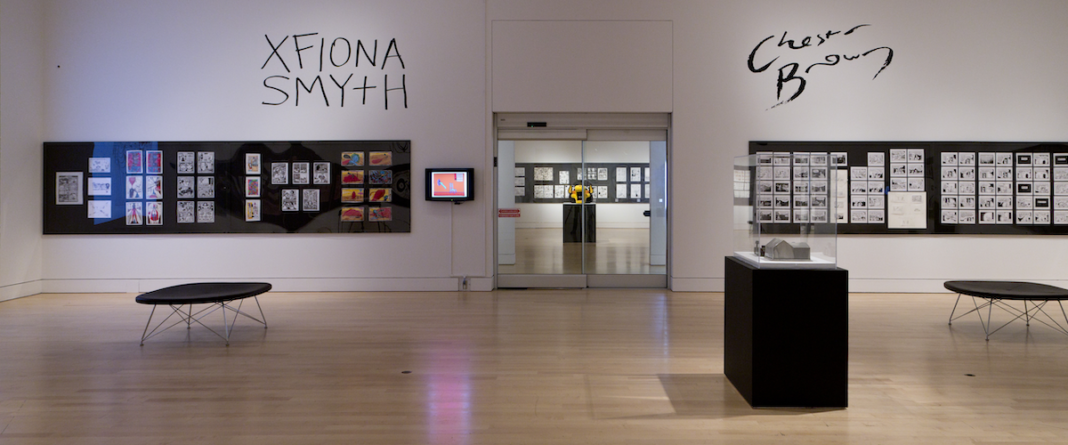
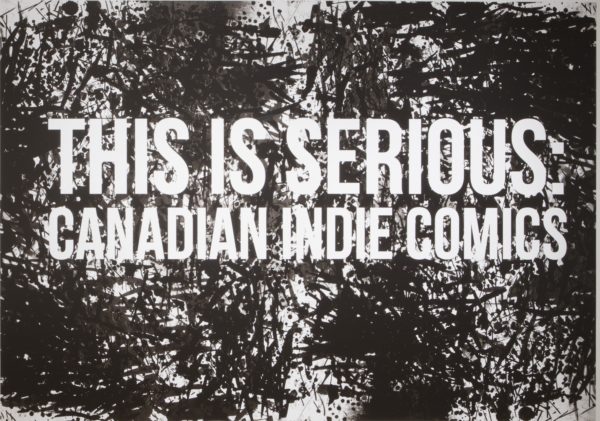
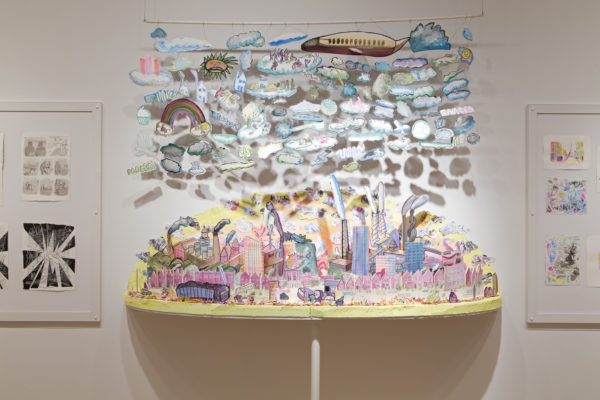
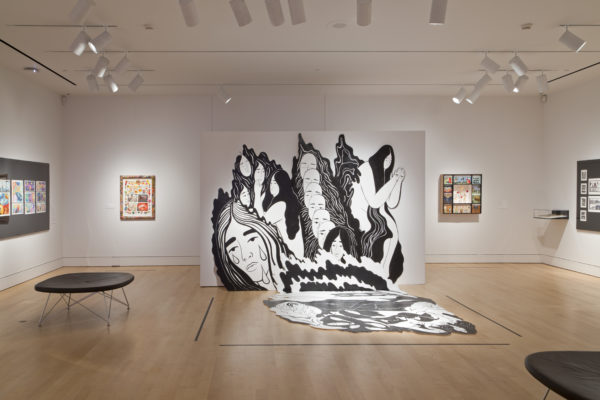
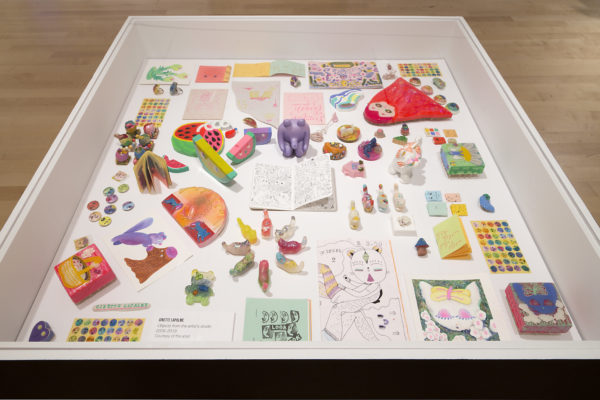
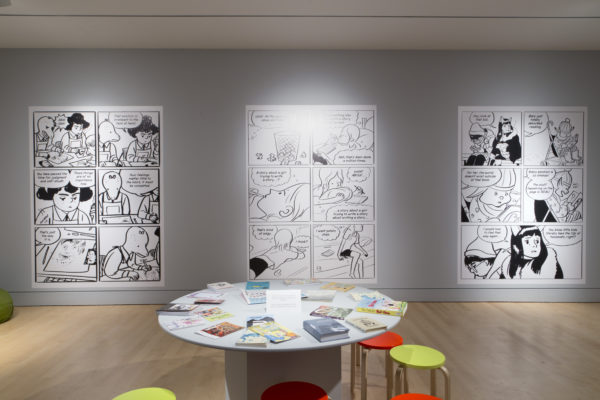

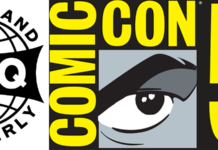
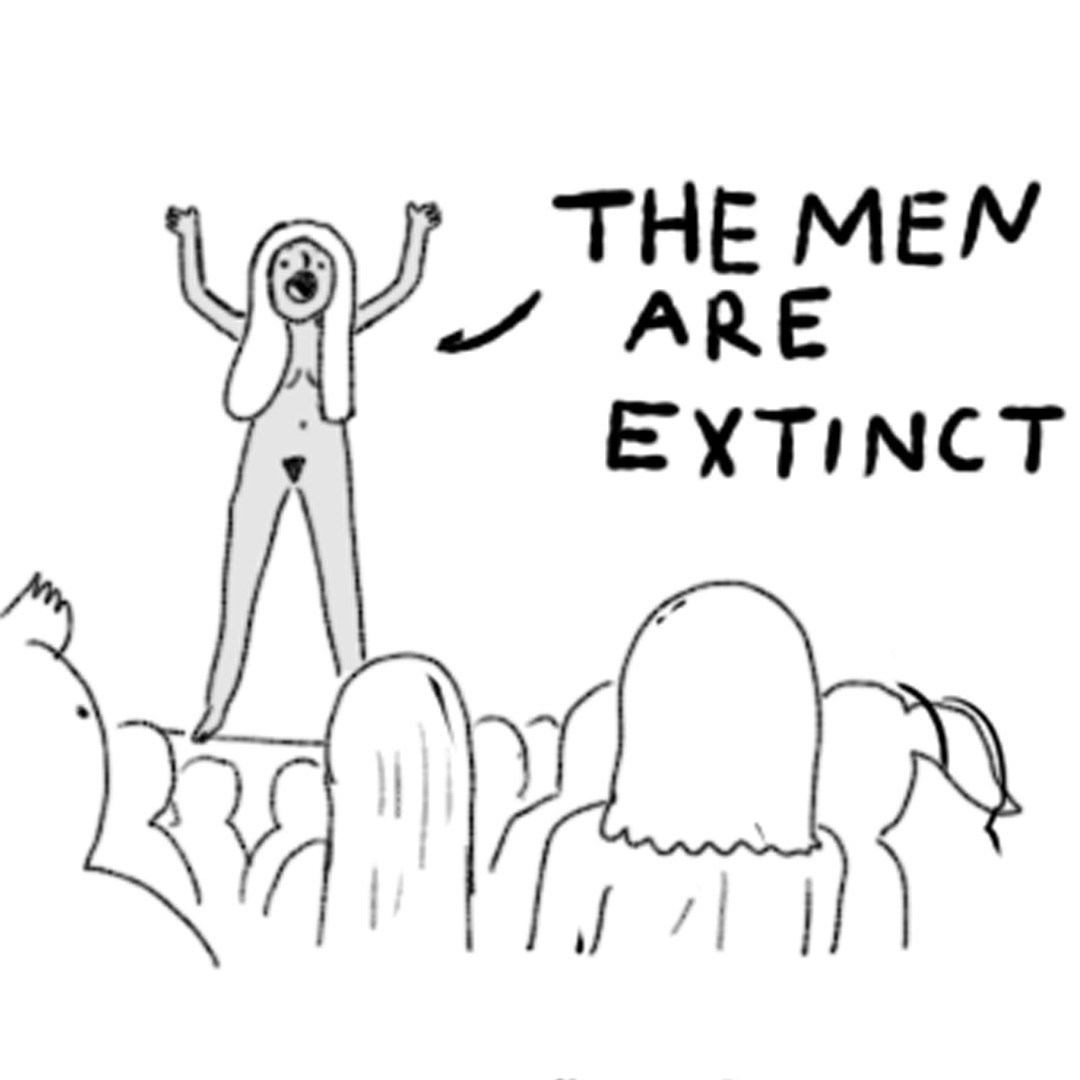



Comments are closed.